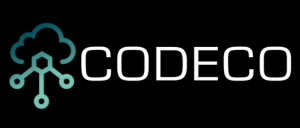Smart Monitoring of the Public Infrastructure
Lead: Göttingen University
In Smart Cities, CODECO will be used in a first use-case to be deployed in the Smart City of Göttingen, supporting the Edge-based sensing applications to be more efficient and allowing for real-time information about the city roads and traffic to be provided to the citizen in an energy-efficient way, contributing to road safety.
| Actors: Public authorities and municipalities can monitor traffic and get analytics on patterns (e.g., traffic, volumes of cars, bikes, etc.). Network Infrastructure provider offers network connection. Cloud/Edge infrastructure provider offers computation and storing resource for analytics. User (developer, subscriber, e.g., Citizen) can get information about traffic. Roles: Transportation planning and management: The government and municipalities will have access to real-time traffic analytics, including abnormal alarms, as well as long-term traffic pattern analytics. By automatically collecting and analysing data on traffic behaviour, they can gain insights that can inform decision-making and improve city planning, enhancing traffic safety and efficiency. Property development and investment: The infrastructure provider and deployer need to carefully consider the selection, deployment, and maintenance of the system, considering the feasibility and costs associated with each step. Once the system is deployed, the infrastructure provider conducts testing and validation to ensure that it is working effectively and providing the desired results. Advertising and marketing: The citizen will have access to real-time traffic information through downloadable apps or public boards, enabling them to plan their travel and make informed decisions about their routes. | User Journey #1 Transportation planning and management: The real-time traffic data collected by the road usage monitoring system can be used to optimize transportation planning and management in the city. This can benefit businesses that rely on efficient transportation and logistics, such as delivery services, public transportation companies, and trucking companies. User Journey #2 Property development and investment: The pedestrian distribution monitoring part of the system can provide valuable insights into foot traffic patterns in different areas of the city. This information can be used to make data-driven decisions about property development and investment. Real estate companies and property developers can use this data to identify high-traffic areas and make informed decisions about where to invest in new properties or develop existing ones. User journey #3 Advertising and marketing: The data collected by the system can also be used for advertising and marketing purposes. For example, businesses can use the data to identify high-traffic areas and strategically place their ads in these locations. This can help businesses reach their target audience more effectively and potentially increase sales. |
MDS across Decentralised Edge-Cloud
Lead: Telefonica
A second Smart City use-case addresses the delivery of broadcast content to the citizen in a faster way, by selecting the caching points based on an analysis of the network and of the usage in specific Edges, contributing to an optimized experience of Media Delivery Systems. And shall be deployed in the Telefonica Labs, in Madrid.
| Actors: MDS platform owner. Network Infrastructure owner. Cloud/Edge infrastructure owner. MDS content owner. MDS subscriber. Roles: The primary actor is the application-service provider (and network capability client). There are also two secondary actors: the application-service client, and the network operator. | Business Impact summary To fulfil the ever-changing demands of their clients, companies in the telecommunications sector are continually working to improve their services. Customer turnover is one of the most important issues that service companies must deal with. The revenue and profitability of a firm can be significantly impacted by high customer turnover rates. Service providers are making investments in technology that can raise the quality of the customer experience (QoE) to deal with this problem. One way to reduce costs without a great investment is optimizing the use of the resources available. To archive this, this use case uses exposure capabilities to allow the network client to select the best path according to the nodes and path characteristics and the internal client information. By this, the telecom operator increases service satisfaction improving QoE. This solution allows better resource use, reducing delivery expenses and optimizing the capabilities available in both network and Edge-Cloud. |
